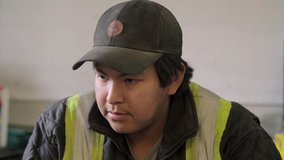New release
Coming
None
Collectionneur
2019
1 min
Leaving soon
Un tandem d’improbables voyageurs croise sur sa route un jeune homme apparemment inconscient du fait qu’on puisse l’observer. Collectionneur examine le concept des espaces semi-privés et la façon dont nous agissons lorsque nous oublions qu’on peut nous voir. Ce film a été produit dans le cadre du Hothouse 12, stage de formation offert aux cinéastes de la relève par le Studio d’animation de Montréal.

-
 Hothouse2019 14 editions
Hothouse2019 14 editions
Details
Un tandem d’improbables voyageurs croise sur sa route un jeune homme apparemment inconscient du fait qu’on puisse l’observer. Collectionneur examine le concept des espaces semi-privés et la façon dont nous agissons lorsque nous oublions qu’on peut nous voir.
Ce film a été produit dans le cadre du Hothouse 12, stage de formation offert aux cinéastes de la relève par le Studio d’animation de Montréal.
Ce film a été produit dans le cadre du Hothouse 12, stage de formation offert aux cinéastes de la relève par le Studio d’animation de Montréal.
-
scriptKassia Ward
-
directionKassia Ward
-
animationKassia Ward
-
mentoring directorMarie Clements
-
editorNicolas Renaud
-
sound designerLuigi Allemano
-
assistant sound designerTravis Mercredi
-
musicBrehdren
-
NoneZane KozakRod ThibeaultDominique Forget
-
effectsZane Kozak
-
technical directorÉloi Champagne
-
technical specialist - animationRandall Finnerty
-
technical coordinatorMaud Chayer
-
sound effects creationKarla BaumgardnerChristopher Grant
-
recordingGeoffrey MitchellLuc Léger
-
titlesMélanie Bouchard
-
online editingDenis Pilon
-
studio administratorRosalina Di SarioVictoire-Émilie Bessette
-
studio coordinatorBarry Ahmad
-
marketingJudith Lessard-Bérubé
-
associate producerAmanda StrongAmanda Roy
-
producerJelena PopovicMaral Mohammadian
-
executive producerMichael Fukushima

















